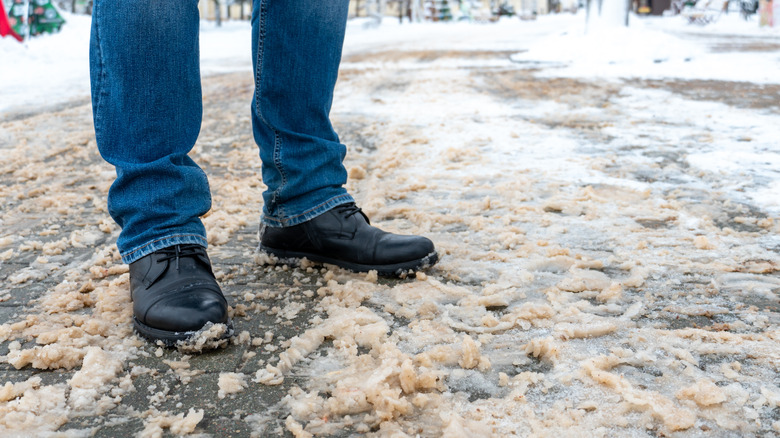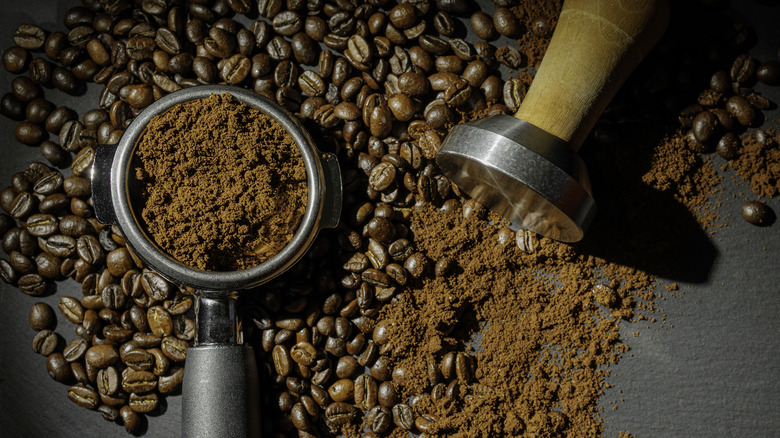Can Coffee Grounds Really Double As An Effective De-Icer During Winter?
With so many unexpected uses for leftover coffee grounds around your home, there's no excuse not to top off your morning mug again and again. From fertilizing your garden to deodorizing your shoes, those seedy dregs are often more helpful during their second iteration, so it should come as no surprise that some believe coffee grounds can double as an effective de-icer during winter. While this is not entirelyaccurate, coffee grounds can be used on frozen sidewalks and other paved surfaces to improve traction.
Rock salt and ice melt are popular products used during winter home maintenance to dissolve snow and ice. If you live in a colder climate, you've probably applied one or the other to your driveway or walkway after a storm to prevent nasty spills; you may have subsequently had to employ vinegar and baking soda to get road salt stains off your carpet. De-icers are effective thanks to their chemical composition, which helps melt or prevent the formation of ice by lowering the freezing point of water. In doing so, the bond between ice and concrete is inhibited, making snow and ice removal much easier.
Unfortunately, coffee grounds don't possess super melting powers like rock salt or ice melt. In fact, by itself, java sediment is unable to thaw anything frozen, unless perhaps it was heated up and applied in its steaming hot state onto an icy sidewalk. Still, any melting would be minimal at best in size, scope, and duration.
How and why to use coffee grounds on ice-covered pavement during winter
Leftover coffee grounds may not be able to de-ice paved surfaces in the winter; however, they do come in handy around the house as a gripping agent on frozen concrete. Simply collect a generous amount of used coffee bean residue and liberally scatter it on icy patches peppering your driveway or walkway. The coarse texture of the coffee grounds mimics sand and provides much-needed traction in slippery conditions.
In addition, you can further improve your footing on slick spots if you apply coffee grounds to ice-covered areas on sunny days. Doing so allows heat from the sun's rays to be absorbed by the dark-colored pulverized coffee beans, making them warmer than the ice situated below and around them. While technically coffee grounds alone can't melt frozen water, when coupled with direct sunlight and mild temperatures, they can radiate heat and slowly thaw nearby items. In turn, icy areas around your home become safer to navigate.
Finally, recycling coffee grounds to prevent serious slips that can lead to broken bones and concussions is as beneficial to your wallet as it is to your body. Essentially, it gives you an excuse to drink more joe throughout the day. You'll also enjoy a clear conscience knowing you're sparing your dog's paws from potential chemical burns that come from prolonged treading on pavement treated with ice melt as coffee grounds are safe for pets and the environment.

